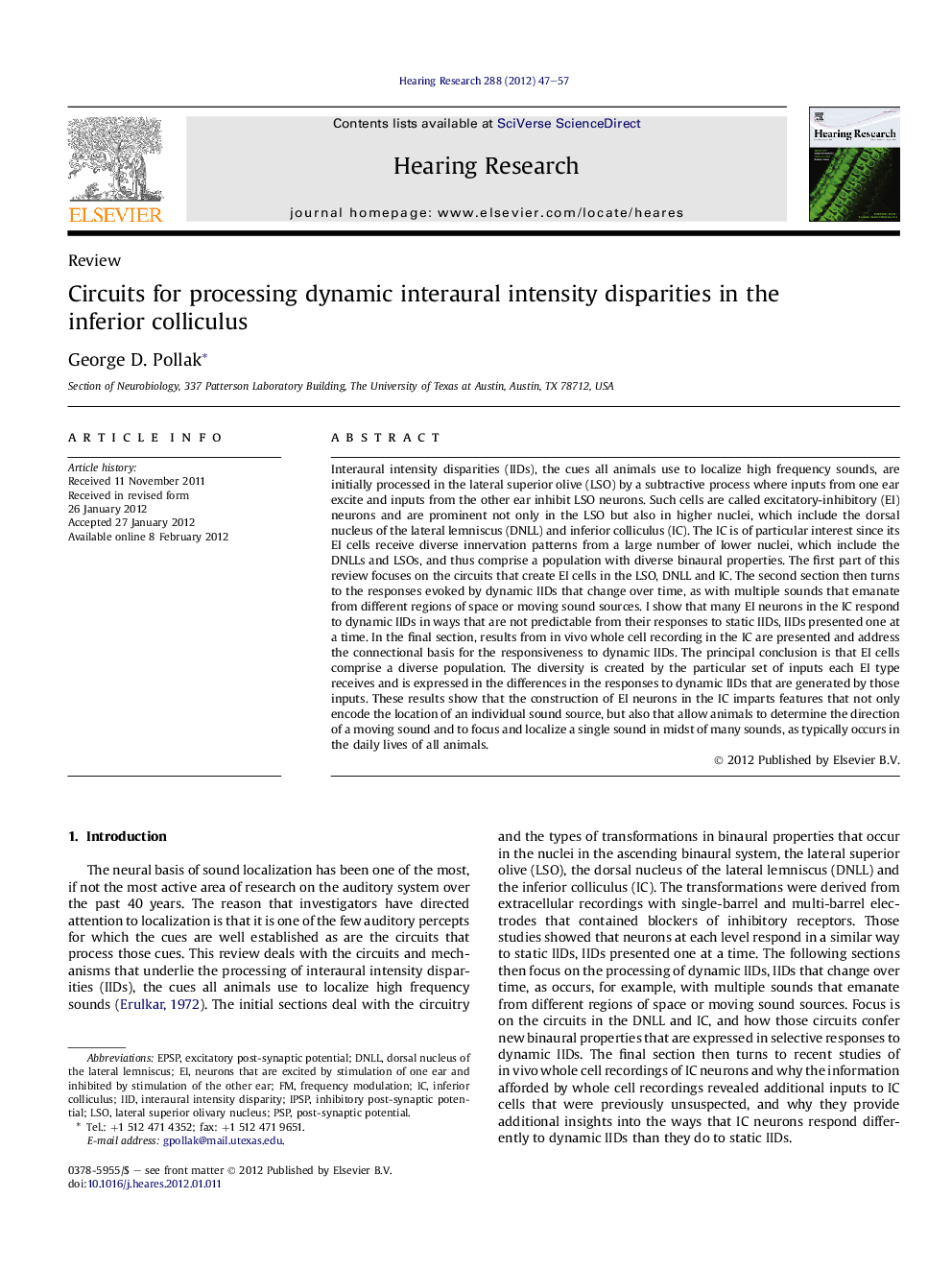| Article ID | Journal | Published Year | Pages | File Type |
|---|---|---|---|---|
| 4355364 | Hearing Research | 2012 | 11 Pages |
Interaural intensity disparities (IIDs), the cues all animals use to localize high frequency sounds, are initially processed in the lateral superior olive (LSO) by a subtractive process where inputs from one ear excite and inputs from the other ear inhibit LSO neurons. Such cells are called excitatory-inhibitory (EI) neurons and are prominent not only in the LSO but also in higher nuclei, which include the dorsal nucleus of the lateral lemniscus (DNLL) and inferior colliculus (IC). The IC is of particular interest since its EI cells receive diverse innervation patterns from a large number of lower nuclei, which include the DNLLs and LSOs, and thus comprise a population with diverse binaural properties. The first part of this review focuses on the circuits that create EI cells in the LSO, DNLL and IC. The second section then turns to the responses evoked by dynamic IIDs that change over time, as with multiple sounds that emanate from different regions of space or moving sound sources. I show that many EI neurons in the IC respond to dynamic IIDs in ways that are not predictable from their responses to static IIDs, IIDs presented one at a time. In the final section, results from in vivo whole cell recording in the IC are presented and address the connectional basis for the responsiveness to dynamic IIDs. The principal conclusion is that EI cells comprise a diverse population. The diversity is created by the particular set of inputs each EI type receives and is expressed in the differences in the responses to dynamic IIDs that are generated by those inputs. These results show that the construction of EI neurons in the IC imparts features that not only encode the location of an individual sound source, but also that allow animals to determine the direction of a moving sound and to focus and localize a single sound in midst of many sounds, as typically occurs in the daily lives of all animals.
► The IC is composed of a diverse neuronal population due to the differential innervation of IC cells from lower nuclei. ► The circuits to the inferior colliculus confer selective responses to dynamic IIDs. ► Responding to dynamic IIDs in the IC are determined by inputs from the DNLL.
